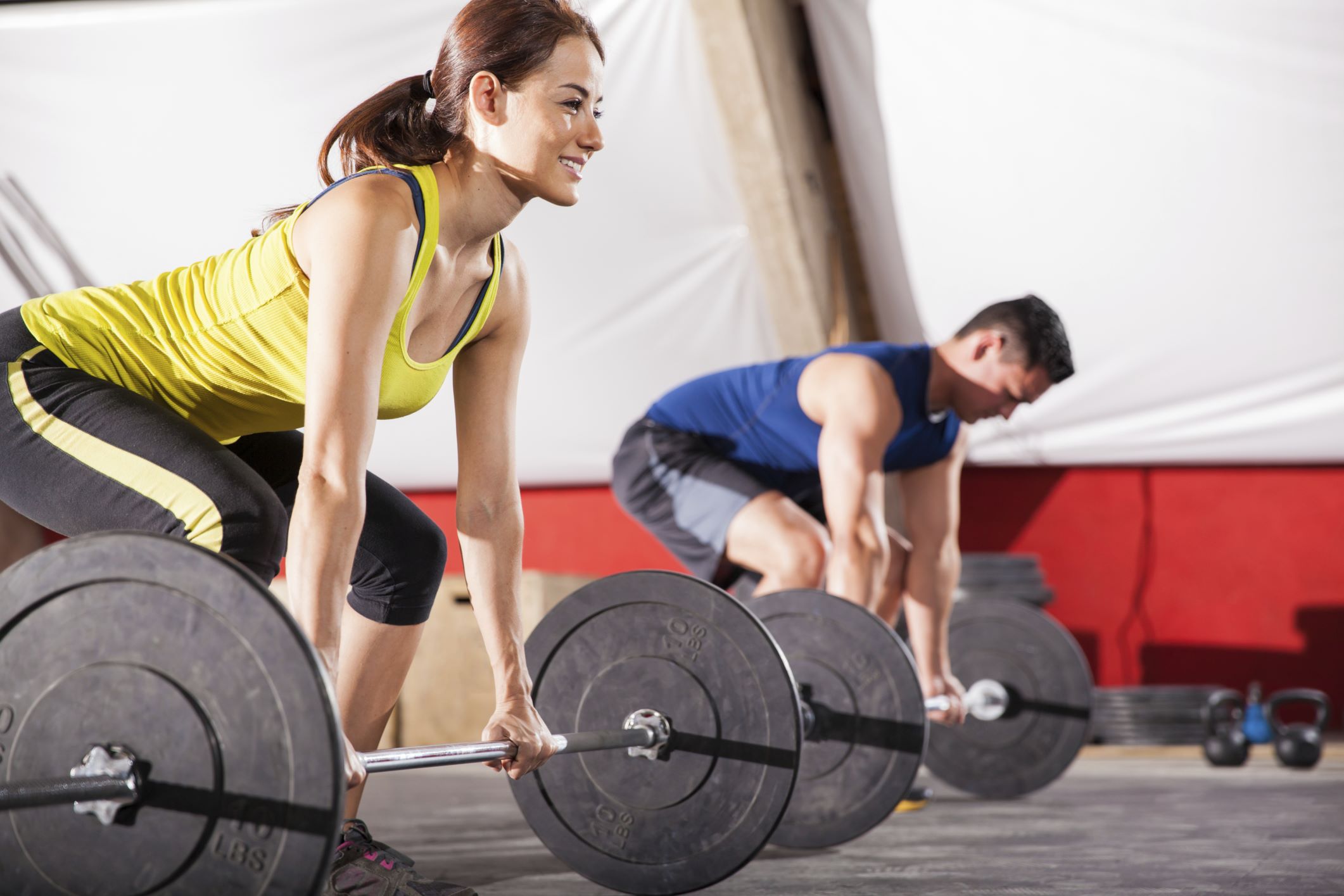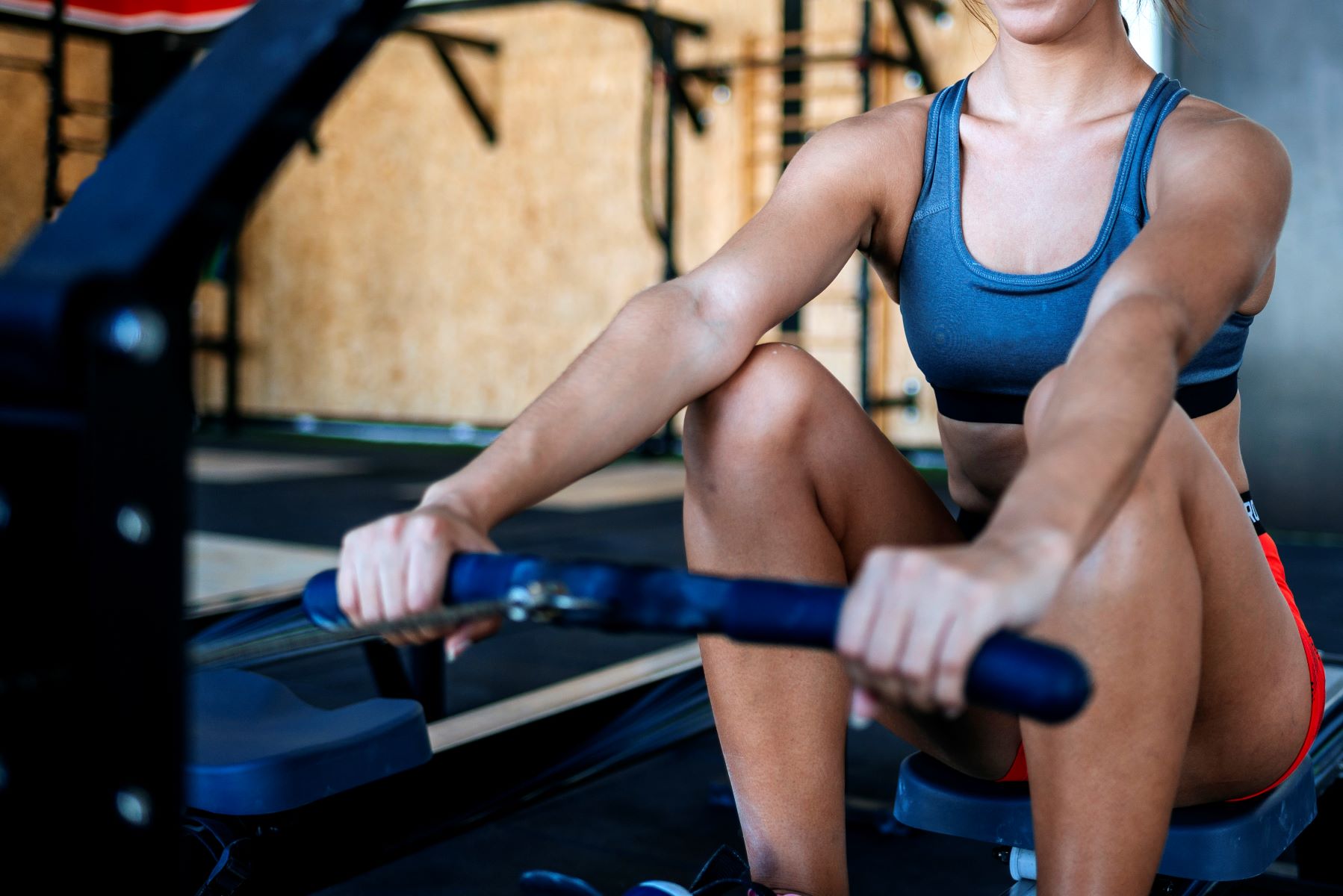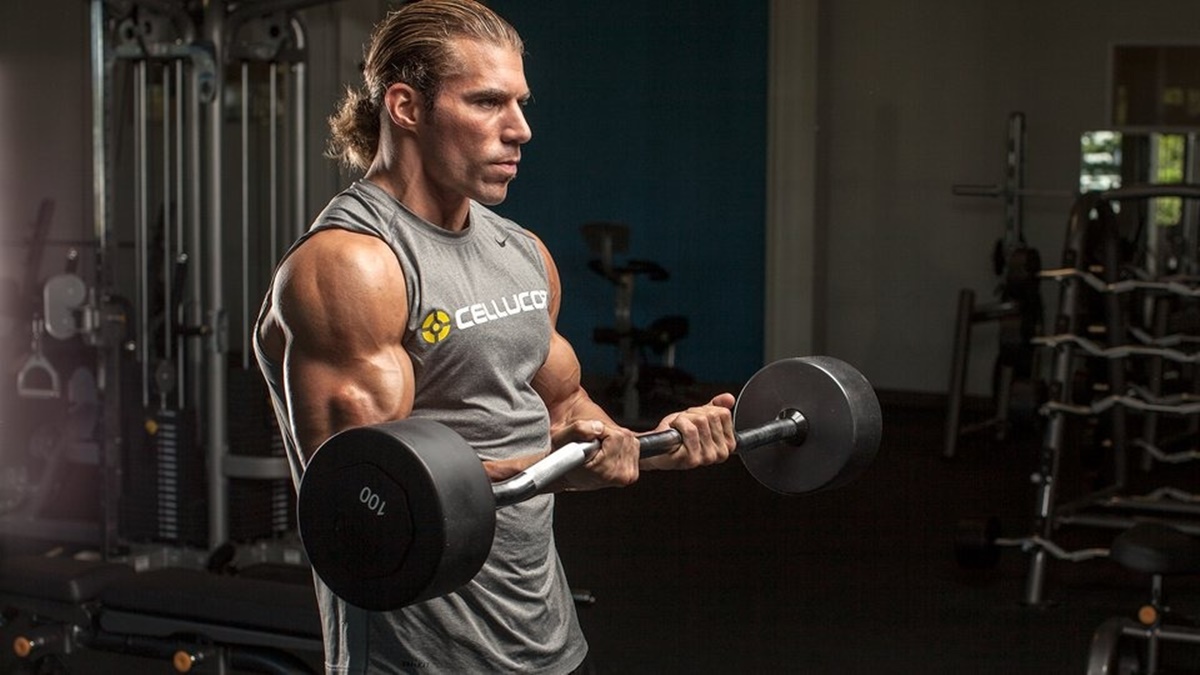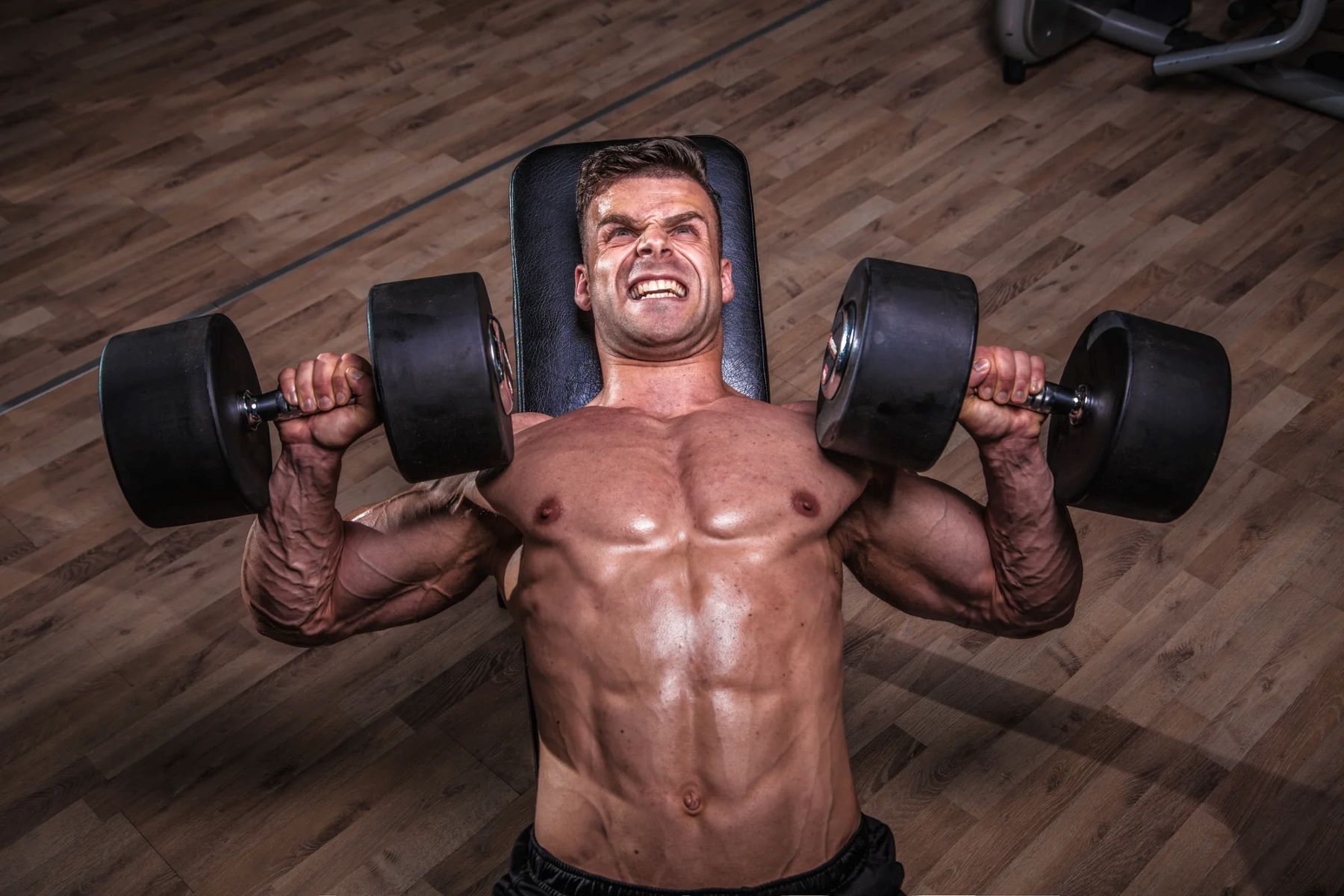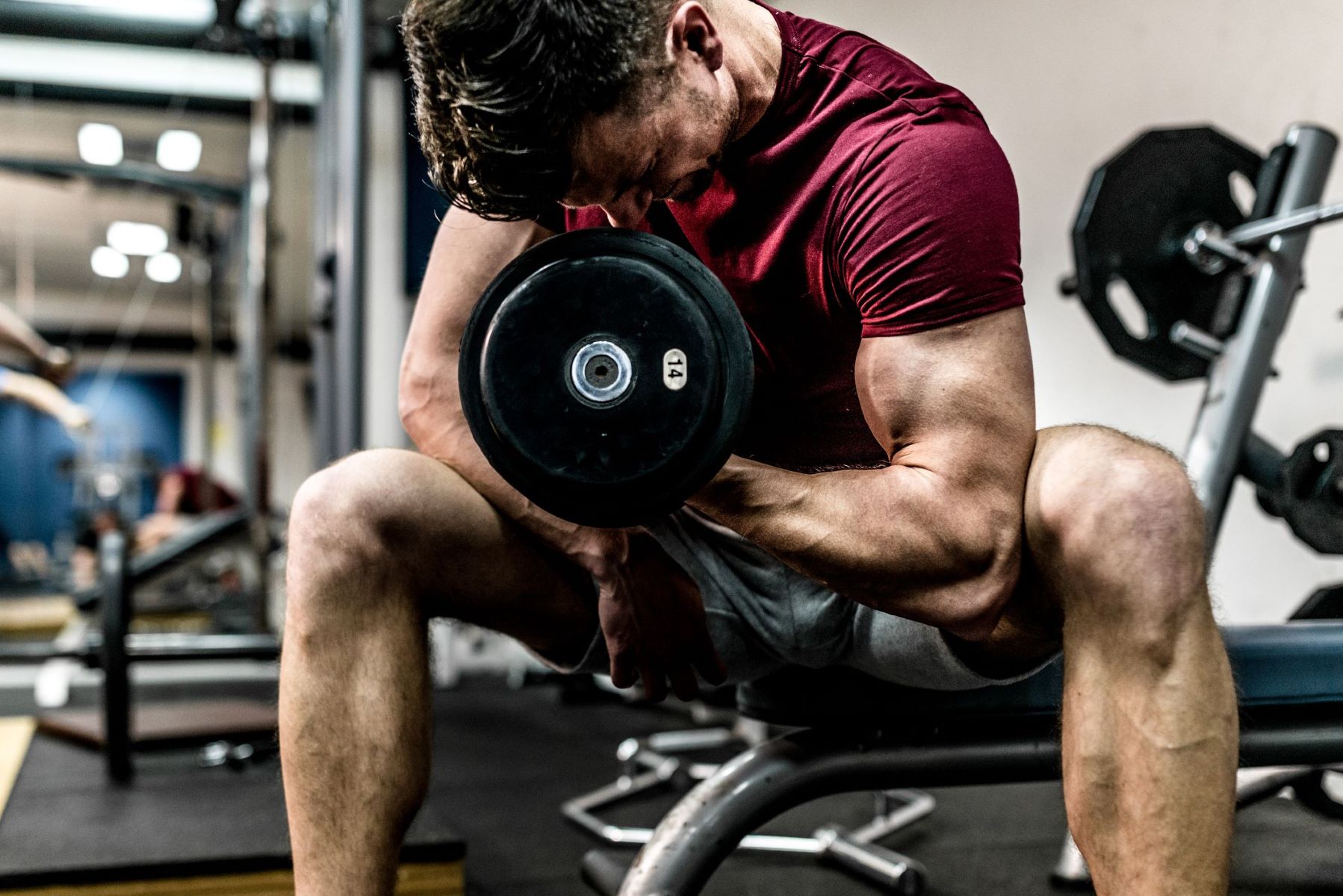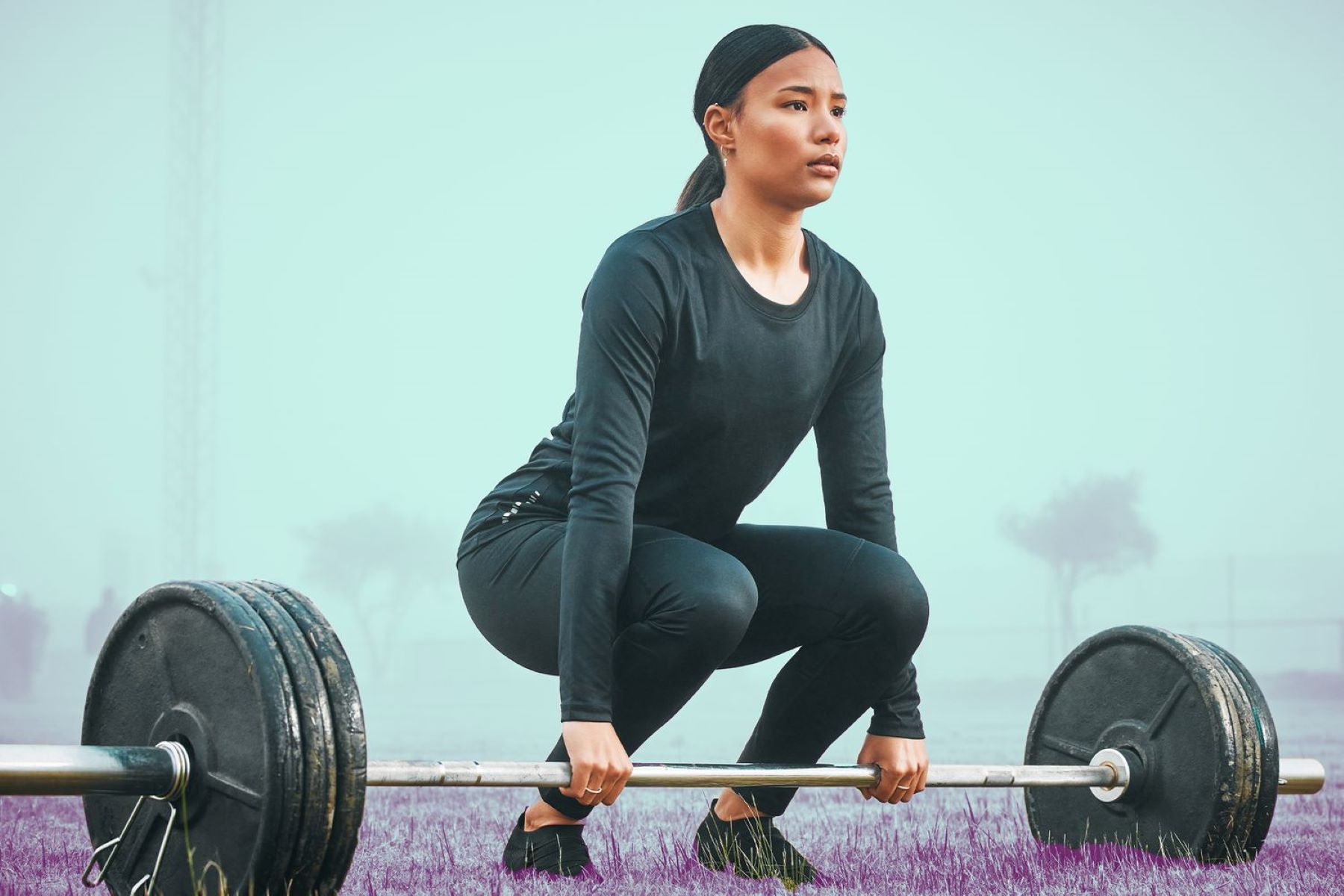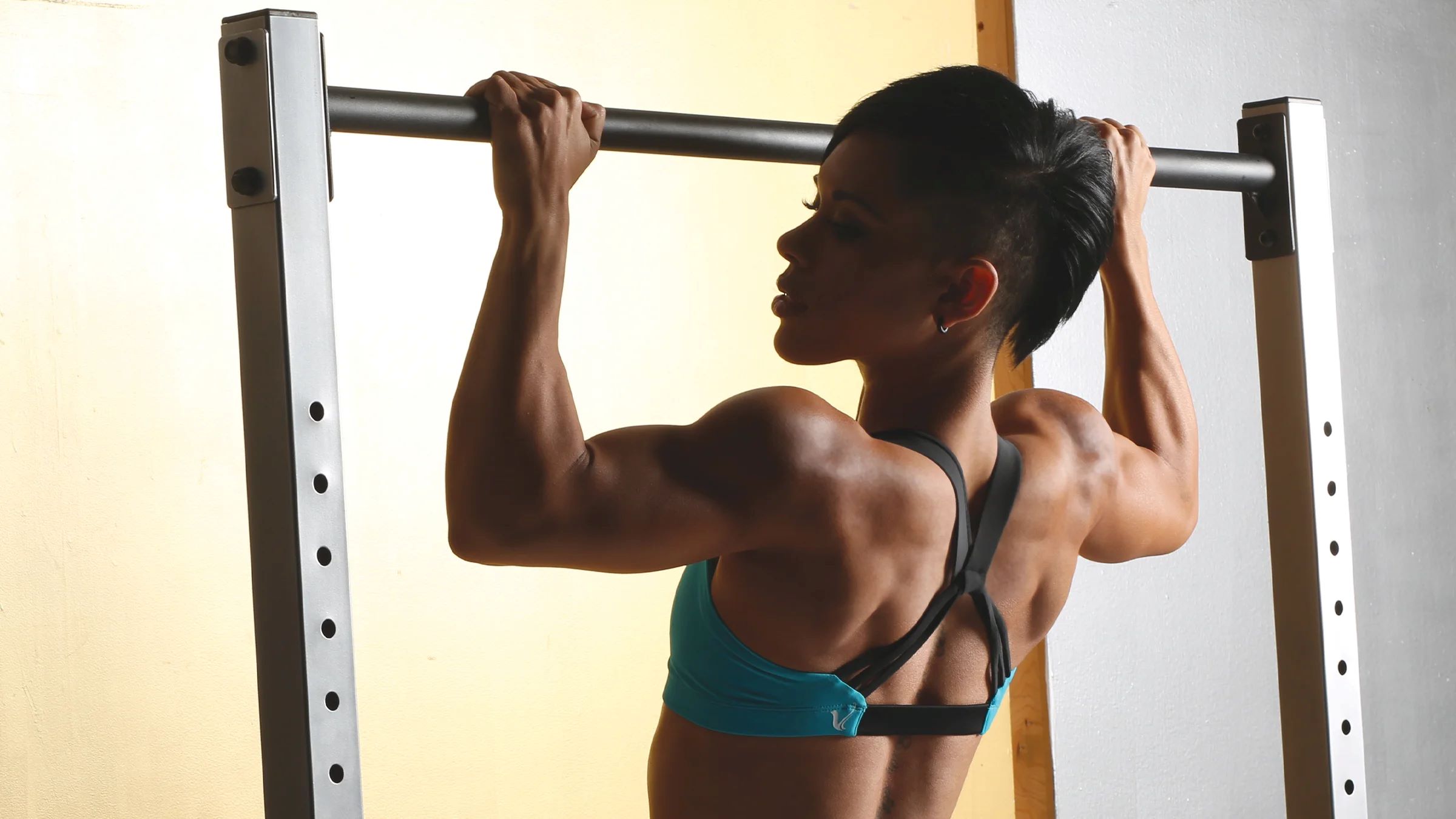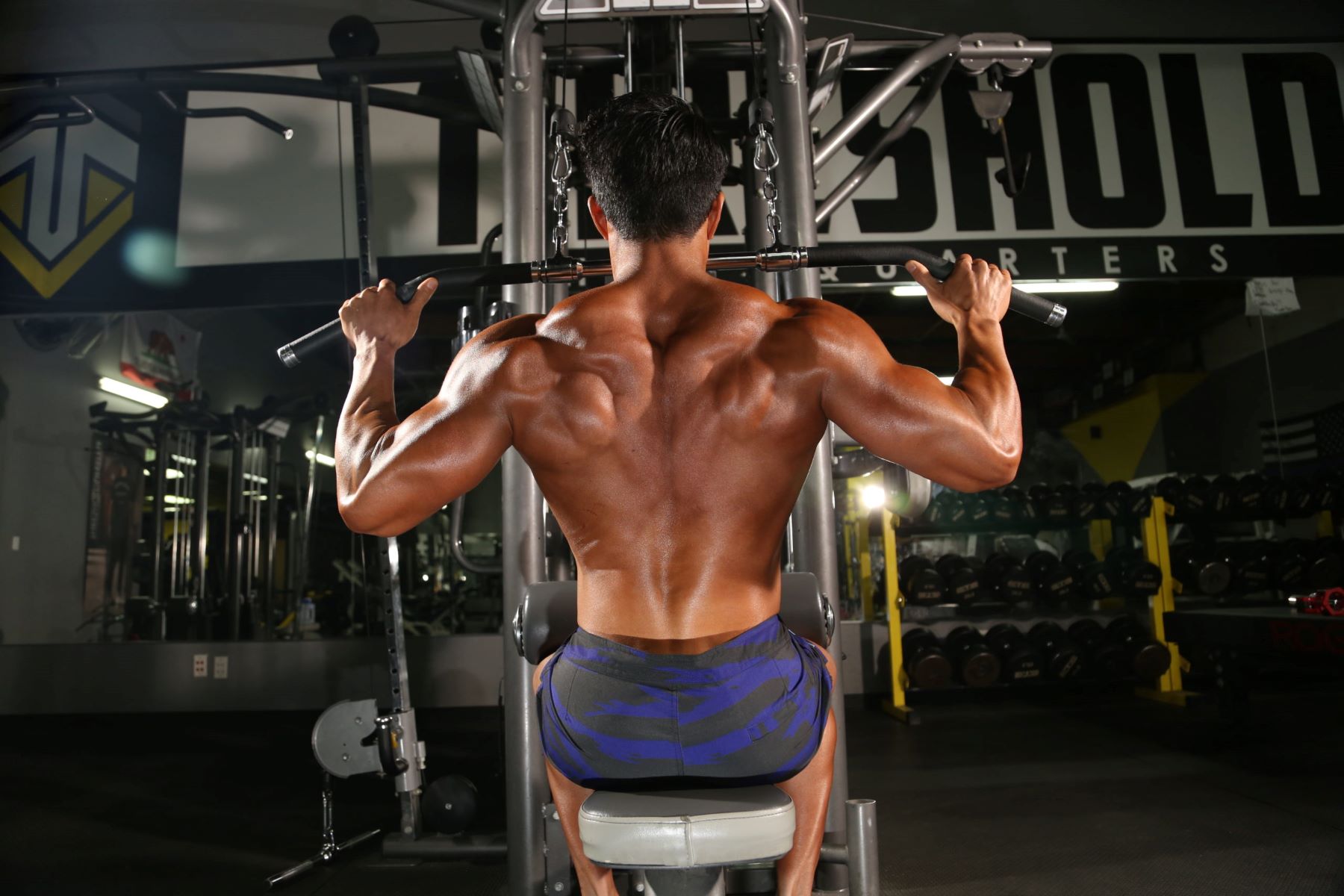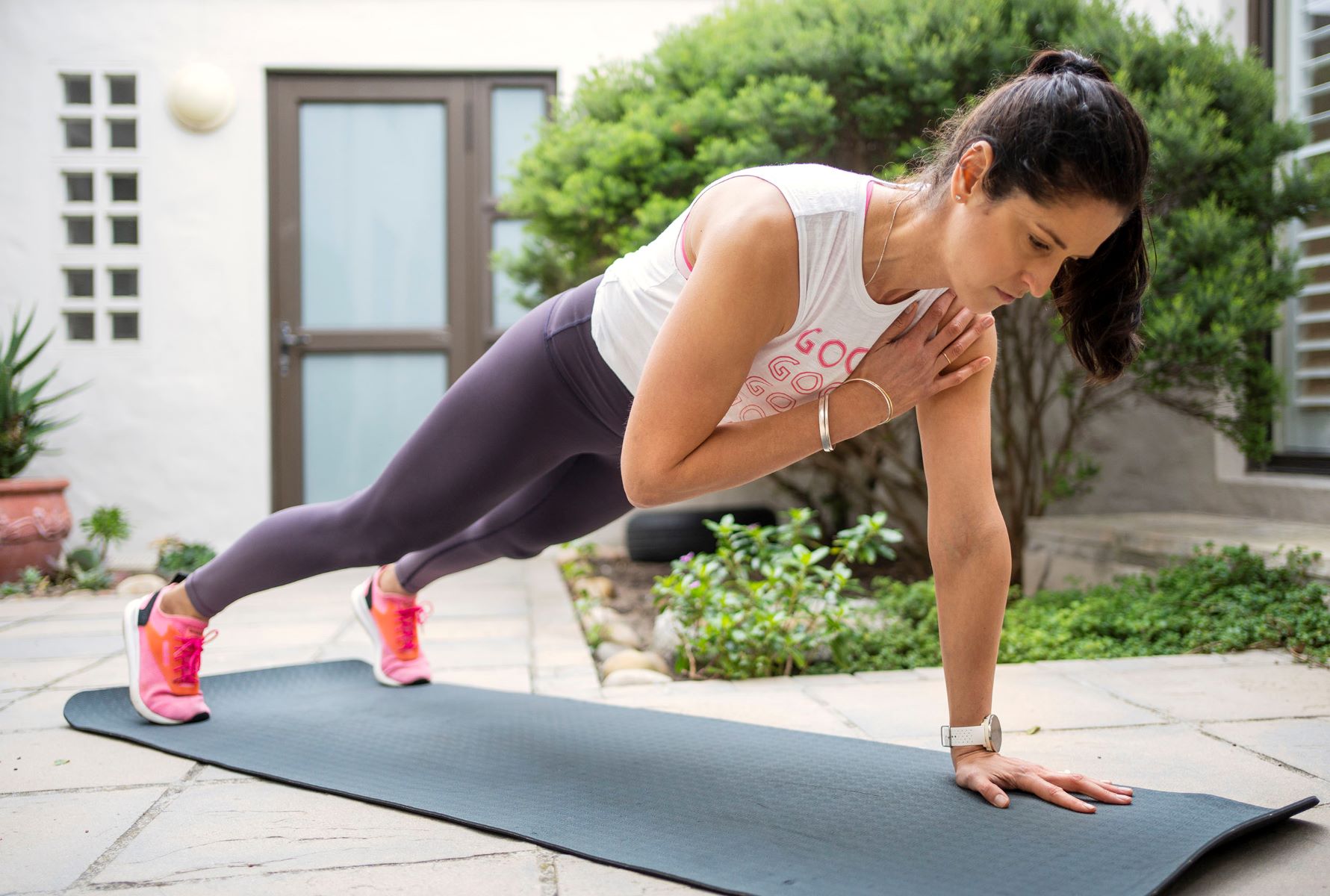

Featured
How To Workout Forearms
Modified: January 2, 2024
Learn how to effectively workout your forearms with our featured exercises and tips. Strengthen and tone your forearms for improved performance and aesthetics.
Introduction
Welcome to the world of forearm workouts! While many people focus on training their biceps, triceps, and chest, it is equally important to pay attention to the often overlooked forearm muscles. Strengthening your forearms not only improves overall arm strength, but also enhances your grip, which is essential for various activities such as weightlifting, rock climbing, and even simple tasks like carrying groceries or opening jars.
Forearm workouts offer a multitude of benefits beyond just aesthetics. Strong forearms can help reduce the risk of injury by providing support to the wrists and elbows during physical activities. In addition, well-developed forearms can improve your performance in sports that require throwing, swinging, or gripping, giving you an edge over your competitors.
Before diving into the world of forearm exercises, it’s important to note that warm-up exercises are crucial to prepare the muscles for the intense workout ahead. Performing appropriate warm-up exercises helps increase blood flow, improve flexibility, and reduce the risk of muscle strains or injuries.
In this article, we will explore a variety of exercises specifically designed to target the forearm muscles. We will discuss warm-up exercises, strengthening exercises, and stretching exercises, all of which are essential for a well-rounded forearm workout routine. Additionally, we will provide tips to maximize the effectiveness of your workouts and help you achieve your desired forearm strength and definition.
So, get ready to roll up your sleeves and embark on a journey to attain impressive forearm strength. Whether you’re a fitness enthusiast, an athlete, or someone looking to enhance your overall arm strength, this article will provide you with the necessary tools and information to take your forearm workouts to the next level.
Importance of Forearm Workouts
When it comes to building strength and improving overall fitness, people often focus on larger muscle groups like the chest, back, and legs. However, neglecting the forearms can lead to an imbalance in your physique and limit your performance in various activities. Here’s why forearm workouts are so important:
- Enhanced Grip Strength: Strong forearms are essential for a powerful grip, which is crucial for activities like weightlifting, rock climbing, and even everyday tasks like opening jars or carrying heavy objects. By strengthening your forearms, you can improve your ability to hold onto objects and perform better in physical activities.
- Injury Prevention: Forearm workouts help to stabilize the wrists and elbows, reducing the risk of overuse injuries and strain. Strengthening the muscles in the forearms provides support to these joints and helps maintain proper alignment during movements, decreasing the likelihood of injuries.
- Improved Performance in Sports: Many sports, such as tennis, golf, baseball, and martial arts, heavily rely on forearm strength and grip. Strong forearms allow you to generate more power and control in your movements, leading to enhanced performance and better results in your chosen sport.
- Balanced Physique: While a well-developed upper body is visually appealing, having disproportionately small forearms can create an imbalance in your physique. By dedicating time to forearm workouts, you can ensure a harmonious and proportional appearance from your shoulders down to your hands.
- Functional Strength: Strong forearms contribute to overall functional strength, enabling you to handle daily activities with ease. Whether it’s carrying groceries, doing household chores, or participating in physical work, having robust forearms makes these tasks more manageable and reduces the risk of strain or fatigue.
By incorporating forearm workouts into your fitness routine, you can reap these numerous benefits while improving your overall strength and functionality. Now that the importance of forearm training is clear, let’s explore some specific exercises to target these muscles and help you achieve the strong, defined forearms you desire.
Warm-Up Exercises for Forearms
Before diving into intense forearm exercises, it’s crucial to warm up your muscles to prevent injuries and maximize the effectiveness of your workout. These warm-up exercises will help increase blood flow to the forearms, improve flexibility, and prepare your muscles for the upcoming workout:
- Wrist Rotations: Start by extending your arms forward with your palms facing down. Slowly rotate your wrists in a circular motion, both clockwise and counterclockwise. Perform 10 rotations in each direction to mobilize and warm up the muscles in your wrists and forearms.
- Finger Flexor Stretch: Extend one arm in front of you with your palm facing up. Use the other hand to gently pull back your fingers, feeling a stretch in the forearm muscles. Hold this stretch for 15-20 seconds, then switch to the other arm. This stretch targets the finger flexors, which play a vital role in gripping and forearm strength.
- Forearm Flexor Stretch: Extend one arm in front of you, parallel to the ground, with your palm facing down. Use the other hand to gently pull back your fingers, feeling a stretch in the top of your forearm. Hold this position for 15-20 seconds, then switch to the other arm. This stretch targets the forearm flexor muscles, which are responsible for wrist flexion and grip strength.
- Wrist Extensor Stretch: Extend one arm in front of you, palm facing down. Use the other hand to gently pull back on your fingers, feeling a stretch in the back of your forearm. Hold for 15-20 seconds, then switch to the other arm. This stretch targets the wrist extensor muscles, which are crucial for wrist extension and stability.
- Hand Squeezes: Place a soft stress ball or grip strengthener in the palm of your hand. Squeeze the ball or stress ball as hard as you can, and hold the squeeze for 5 seconds. Repeat this exercise 10-15 times for each hand to activate the muscles in your fingers, hands, and forearms.
Performing these warm-up exercises before your forearm workouts will help increase blood flow, loosen up the muscles, and prepare them for the upcoming exercises. Remember to focus on proper form, breathe deeply, and listen to your body during the warm-up process. Now that you’ve adequately warmed up, it’s time to move on to the strengthening exercises for your forearms.
Strengthening Exercises for Forearms
Now that you’re properly warmed up, it’s time to dive into the strengthening exercises for your forearms. These exercises specifically target the muscles in your forearms and help build strength and definition:
- Wrist Curls: Grab a dumbbell or a barbell with an underhand grip. Rest your forearms on a bench or your thighs and allow your wrists to hang over the edge. Curl the weight upwards by flexing your wrists, then slowly lower it back down. Aim for 3 sets of 8-12 repetitions.
- Hammer Curls: Hold a pair of dumbbells in each hand, with your palms facing each other. Keep your elbows close to your body and curl the weights up towards your shoulders, maintaining the palm-to-palm grip. Slowly lower the weights back down. Perform 3 sets of 10-12 repetitions.
- Reverse Curls: Hold a barbell or dumbbells with an overhand grip, palms facing down. Keep your elbows close to your body and curl the weights up towards your shoulders. Focus on engaging the muscles in your forearms throughout the movement. Complete 3 sets of 8-10 repetitions.
- Plate Pinches: Grab two weight plates, preferably of equal size. Hold them together with your fingertips, pinching them tightly. Lift the plates off the ground and hold them for as long as you can. Start with lighter weights and gradually increase the duration as your grip strength improves.
- Farmer’s Walk: Hold a pair of heavy dumbbells or kettlebells in each hand. Walk for a predetermined distance or time, maintaining an upright posture and engaging your core. The weight should challenge your grip strength. Perform multiple sets of Farmer’s Walks, gradually increasing the weight as your forearm strength improves.
When performing these exercises, it’s important to maintain proper form and technique. Focus on the mind-muscle connection, engaging the muscles in your forearms throughout each movement. Start with lighter weights and gradually increase the resistance as your strength improves. Remember to breathe consistently, avoid jerky movements, and rest for an adequate amount of time between sets to allow your muscles to recover.
Incorporating these strengthening exercises into your regular workout routine can help you develop well-defined and powerful forearms. As always, listen to your body and adjust the weights and intensity according to your fitness level and goals. Now that you’re well on your way to stronger forearms, let’s move on to the next section: stretching exercises to enhance flexibility and prevent muscle tightness.
Wrist Curls
Wrist curls are a fundamental exercise for targeting the muscles in your forearms, specifically the wrist flexors. By performing this exercise, you can effectively strengthen your forearms and improve grip strength. Here’s how to perform wrist curls:
- Starting Position: Sit on a bench or chair with your feet flat on the ground. Hold a dumbbell or barbell with an underhand grip.
- Forearm Placement: Rest your forearms on a bench or your thighs. Allow your wrists to hang over the edge, with your palms facing up.
- Curling Movement: Slowly curl the weight upwards by flexing your wrists. Keep your forearms stationary throughout the movement. Squeeze your forearms as you lift the weight.
- Lowering Phase: Once your wrists are fully flexed, slowly lower the weight back down to the starting position. Maintain control and avoid swinging or using momentum.
- Repetitions and Sets: Aim for 3 sets of 8-12 repetitions, or adjust the weight and repetitions based on your fitness level and goals.
During wrist curls, it’s crucial to maintain proper form to effectively target the desired muscles. Avoid using excessive momentum and focus on the mind-muscle connection, concentrating on engaging the muscles in your forearms throughout the movement.
Wrist curls can be performed using dumbbells, barbells, or even resistance bands. Choose a weight that challenges you but still allows you to maintain good form and complete the desired number of repetitions. As you progress, you can increase the weight or opt for other variations of wrist curls to continue challenging your forearms.
By incorporating wrist curls into your forearm workout routine, you can strengthen your forearm muscles, improve grip strength, and enhance your overall arm strength. These exercises are not only beneficial for athletes and weightlifters but also for individuals looking to improve their functionality in daily activities. Remember to warm up properly and listen to your body to prevent injuries and maximize the effectiveness of your workouts.
Hammer Curls
Hammer curls are an effective exercise for targeting the muscles in your forearms, specifically the brachialis and brachioradialis. By incorporating hammer curls into your forearm workout routine, you can develop strength, size, and definition in your forearms and improve your grip strength. Here’s how to perform hammer curls:
- Starting Position: Stand up straight with a dumbbell in each hand. Keep your palms facing inward, towards your body, with a neutral grip.
- Arm Position: Position your arms by your sides, with your elbows close to your body. Maintain a slight bend in your knees for stability.
- Curling Movement: Slowly curl the dumbbells up towards your shoulders while maintaining the neutral grip. Keep your elbows stationary and focus on squeezing your forearms throughout the movement.
- Peak Contraction: Once your biceps are fully contracted and the dumbbells are close to your shoulders, pause for a brief moment and squeeze your forearms to intensify the contraction.
- Lowering Phase: Slowly lower the dumbbells back down to the starting position, controlling the movement and avoiding swinging or using momentum.
- Repetitions and Sets: Aim for 3 sets of 10-12 repetitions, or adjust the weight and repetitions based on your fitness level and goals.
Hammer curls offer a unique variation compared to traditional bicep curls. By using a neutral grip, you specifically target the brachialis and brachioradialis muscles in your forearms, resulting in increased forearm strength and thickness.
As with any exercise, maintaining proper form is crucial. Keep your upper body steady, engage your core, and focus on isolating the forearms throughout the movement. Avoid swinging your arms or using momentum to lift the weight. Instead, concentrate on the mind-muscle connection, and squeeze your forearm muscles at the top of the movement to maximize the benefits.
Hammer curls can be performed with dumbbells, barbells, or even resistance bands. Experiment with different variations and equipment to keep your workouts challenging and exciting. As you progress, you can increase the weight or incorporate supersets or drop sets to further push your forearm muscles.
By incorporating hammer curls into your forearm workout routine, you can develop strength, size, and definition in your forearms, improve grip strength, and enhance the overall symmetry of your arms. Remember to warm up properly and listen to your body to prevent injuries and maximize the effectiveness of your workouts.
Reverse Curls
Reverse curls are an excellent exercise to target the muscles in your forearms, particularly the brachioradialis and brachialis. By incorporating reverse curls into your forearm workout routine, you can strengthen your forearms, improve grip strength, and add definition to your arm muscles. Here’s how to perform reverse curls:
- Starting Position: Stand up straight with a barbell or a pair of dumbbells in your hands. Hold the weight with an overhand grip, palms facing down.
- Arm Position: Keep your arms extended in front of you, shoulder-width apart. Your elbows should be close to your body, and your back should be straight.
- Curling Movement: Slowly curl the weight up towards your shoulders, keeping your wrists straight and your palms facing downward throughout the movement. Focus on squeezing your forearms as you lift the weight.
- Peak Contraction: Once you reach the top of the movement and your biceps are fully contracted, pause for a brief moment and squeeze your forearms to maximize the contraction.
- Lowering Phase: Slowly lower the weight back down to the starting position, maintaining control and avoiding swinging or using momentum.
- Repetitions and Sets: Aim for 3 sets of 8-10 repetitions, or adjust the weight and repetitions based on your fitness level and goals.
Reverse curls target the brachioradialis muscle, which runs along the forearm, as well as the brachialis muscle, which lies underneath the biceps. By using an overhand grip, you engage these muscles more effectively and promote balanced development in your arms.
During reverse curls, it’s important to maintain proper form and technique. Keep your upper body steady, engage your core, and focus on isolating the forearms throughout the movement. Avoid using excessive momentum and concentrate on the mind-muscle connection, squeezing your forearms as you lift the weight.
Reverse curls can be performed with a barbell, dumbbells, or even resistance bands. You can experiment with different variations and equipment to keep your workouts challenging and enjoyable. As you become more advanced, you can increase the weight or incorporate supersets and drop sets to push your forearm muscles further.
By incorporating reverse curls into your forearm workout routine, you can strengthen your forearms, improve grip strength, and enhance the overall appearance of your arms. Remember to warm up properly, listen to your body, and adjust the weight and intensity based on your fitness level and goals. Now, let’s move on to the next section: plate pinches to further challenge your forearm muscles.
Plate Pinches
Plate pinches are an effective exercise for targeting the muscles in your forearms, specifically the muscles responsible for grip strength. By incorporating plate pinches into your forearm workout routine, you can enhance your grip strength, improve finger dexterity, and develop stronger forearms. Here’s how to perform plate pinches:
- Equipment: Start by selecting two weight plates of equal size. Ideally, choose plates with a smooth surface.
- Pinching Technique: Place the weight plates together, with the smooth sides facing outward. Ensure that the plates are securely pinched between your thumb and fingers. The thumb should be on one side of the plates, and the fingers on the opposite side.
- Hold and Squeeze: Lift the plates off the ground by pinching them tightly together. Maintain a secure grip and hold the plates for as long as you can. Focus on squeezing your fingers and engaging the muscles in your forearms.
- Duration and Sets: Start with shorter intervals, aiming to hold the plates for 10-15 seconds. Gradually increase the duration as your grip strength improves. Perform multiple sets of plate pinches, allowing adequate rest between sets.
Plate pinches are an effective isometric exercise that challenges your forearm muscles and grip strength. By consistently practicing plate pinches, you can improve your finger dexterity and enhance your ability to hold onto objects with a strong grip.
When performing plate pinches, it’s important to maintain proper form and technique. Use your fingertips and thumb to apply pressure to the plates, ensuring they don’t slip. Focus on squeezing your fingers and engaging the muscles in your forearms throughout the exercise. Gradually increase the weight and duration as your grip strength improves.
If you don’t have weight plates, you can use alternative equipment such as grip strength devices or even squeeze stress balls to enhance your finger and forearm strength. Adding plate pinches to your forearm workout routine provides a unique challenge and helps you develop a powerful grip that can benefit various activities in your daily life.
Remember to warm up properly, listen to your body, and adjust the intensity and weight according to your fitness level and goals. Now that you have a solid understanding of plate pinches, let’s move on to the final section: farmer’s walks, an exercise that not only strengthens your forearms but also challenges your entire body.
Farmer’s Walk
Farmer’s walks are a highly effective exercise that targets the muscles in your forearms, as well as your grip strength, core stability, and overall body strength. This full-body exercise mimics the act of carrying heavy loads, engaging multiple muscle groups and challenging your forearm endurance. Here’s how to perform farmer’s walks:
- Equipment: Select a pair of heavy dumbbells or kettlebells. Choose weights that are challenging but manageable for your fitness level.
- Pick Up the Weights: Stand with your feet shoulder-width apart. Grab the weights with a firm grip, allowing them to hang at your sides. Keep your back straight, shoulders back, and core engaged.
- Walk with Control: Take slow, deliberate steps forward, ensuring that your posture remains upright. Focus on keeping your core tight and your shoulder blades pulled back. Avoid hunching or leaning to one side.
- Distance or Time: Perform farmer’s walks for a predetermined distance, such as walking from one end of a room to the other, or set a time goal, such as walking for 30-60 seconds. Gradually increase the distance or time as your forearm and grip strength improve.
- Safety Considerations: Be mindful of your surroundings and maintain a solid grip on the weights throughout the exercise. If necessary, use wrist straps or gloves to provide extra support and prevent slippage.
Farmer’s walks are a versatile exercise that can be performed in various settings, whether it’s in the gym, outside, or even at home if you have enough space. The exercise engages not only your forearms but also your shoulders, back, core, and legs, making it a highly effective compound movement.
When performing farmer’s walks, focus on maintaining proper form and posture. Keep your core engaged, shoulders back, and chest lifted. Walk with deliberate steps, controlling the movement and avoiding unnecessary swinging or momentum. The weights should challenge your grip strength, but make sure to choose weights that allow you to maintain proper form and complete the desired distance or time.
Integrating farmer’s walks into your forearm workout routine is an excellent way to target the muscles in your forearms while simultaneously gaining overall strength and stability. This exercise can also be modified by using different implements such as farmer’s walk handles or loaded carry implements, which can provide additional variety and challenge.
Remember to warm up properly, start with lighter weights, and gradually increase the load as your forearm strength and grip improve. Farmer’s walks offer a functional and dynamic way to develop strong forearms and enhance your overall strength. Now that you’re familiar with the benefits and technique of farmer’s walks, let’s move on to the next section: stretching exercises to promote flexibility and prevent muscle tightness in the forearms.
Stretching Exercises for Forearms
Stretching exercises for the forearms are an essential component of any forearm workout routine. By incorporating these stretches, you can enhance flexibility, improve circulation, and prevent muscle tightness in the forearm muscles. Here are some effective stretching exercises for the forearms:
- Wrist Extensor Stretch: Extend one arm in front of you with your palm facing down. Use the other hand to gently pull back on your fingers, feeling a stretch in the back of your forearm. Hold this stretch for 15-20 seconds, then switch to the other arm.
- Wrist Flexor Stretch: Extend one arm in front of you with your palm facing up. Use the other hand to gently pull back your fingers, feeling a stretch in the inner part of your forearm. Hold this stretch for 15-20 seconds, then switch to the other arm.
- Forearm Twists: Extend your arms in front of you at shoulder height, with your palms facing down. Slowly rotate your wrists inward, so your palms are facing up. Hold this position for a few seconds, then rotate your wrists outward, returning to the starting position. Repeat this movement for 10-12 repetitions to stretch the muscles in your forearms.
- Prayer Stretch: Bring your palms together in front of your chest, fingers pointing upward. Slowly lower your hands toward your waist, keeping your palms pressed together. You should feel a stretch in the muscles in your forearms and wrists. Hold this stretch for 15-20 seconds.
- Finger Extensor Stretch: Extend one arm in front of you with your palm facing down. Use your other hand to gently pull back on your fingers, stretching the muscles in the back of your hand and forearm. Hold this stretch for 15-20 seconds, then switch to the other arm.
When performing these stretches, it’s important to maintain a gentle and controlled motion. Avoid bouncing or jerking during the stretches, as this can lead to injury. Additionally, remember to breathe deeply and relax into each stretch, focusing on releasing any tension in the forearm muscles.
Stretching your forearms after a workout helps to alleviate muscle tightness and soreness, preventing stiffness and promoting recovery. These stretches can also be beneficial for those who spend long hours performing repetitive motions with their hands and wrists, such as typing or playing musical instruments.
Incorporating these stretching exercises into your forearm workout routine can improve flexibility, reduce the risk of muscle imbalances, and enhance overall performance. Aim to perform these stretches at the end of your workout or on rest days to maximize their benefits. Remember, everyone’s flexibility level may vary, so adjust the intensity of the stretches accordingly to stay within your comfort zone.
Now that you’re equipped with effective stretching exercises for your forearms, let’s move on to some valuable tips to ensure an effective and safe forearm workout.
Tips for an Effective Forearm Workout
To make the most out of your forearm workouts and achieve optimal results, it’s important to keep a few key tips in mind. By following these tips, you can maximize the effectiveness of your workouts and ensure a safe and efficient training session. Here are some essential tips for an effective forearm workout:
- Vary Your Exercises: Incorporate a variety of forearm exercises into your routine to target the muscles from different angles. This helps prevent plateaus and promotes balanced muscle development.
- Progressive Overload: Continuously challenge yourself by gradually increasing the weight, sets, or repetitions as your strength improves. Progressive overload is essential for muscle growth and strength gains.
- Focus on Proper Form: Maintaining proper form throughout each exercise is crucial for targeting the intended muscle groups and reducing the risk of injury. Concentrate on the mind-muscle connection and avoid using momentum to lift the weights.
- Warm Up Adequately: Prioritize a thorough warm-up session to prepare your muscles for the workout. Perform dynamic stretches and mobility exercises to increase blood flow and flexibility in your forearms.
- Listen to Your Body: Pay attention to any discomfort, pain, or signs of overexertion during your forearm workouts. If something doesn’t feel right, modify the exercise or consult a fitness professional to ensure proper technique and prevent injuries.
- Stay Consistent: Consistency is key when it comes to seeing results. Incorporate forearm workouts into your routine regularly, aiming for at least two to three sessions per week to maintain progress and promote muscle growth.
- Rest and Recovery: Allow your forearms ample time to rest and recover between workouts. This allows the muscles to repair and grow stronger. Overtraining can lead to muscle fatigue and increased risk of injury.
- Hydration and Nutrition: Stay hydrated throughout your workout session to support optimal muscle function. Additionally, maintain a balanced and nutritious diet to provide your muscles with the necessary fuel for growth and recovery.
- Patience and Persistence: Building forearm strength and definition takes time and patience. Be consistent with your workouts, stay dedicated, and trust the process. Results will come with consistent effort and perseverance.
By implementing these tips, you can optimize your forearm workouts and make significant progress in developing strong, well-defined forearms. Remember to customize your workout routine based on your fitness level, goals, and any specific considerations or limitations you may have.
Keep in mind that individual results may vary, and it’s important to consult with a healthcare professional or certified trainer before starting any new exercise regimen, especially if you have pre-existing medical conditions or injuries.
Now that you are armed with these valuable tips, you can confidently embark on your forearm workout journey and work towards achieving your desired level of forearm strength and definition.
Conclusion
Congratulations! You now have a comprehensive understanding of forearm workouts and the importance of incorporating them into your fitness routine. Strengthening your forearms offers numerous benefits, from improving grip strength and enhancing overall arm strength to reducing the risk of injury and enhancing your performance in sports and daily activities.
In this article, we covered various aspects of forearm workouts, including warm-up exercises to prepare your muscles, strengthening exercises to target the forearm muscles directly, stretching exercises to promote flexibility, and tips for optimizing your forearm workouts. By following these guidelines, you can develop strong, defined forearms and improve your grip strength.
Remember to warm up adequately before each workout, gradually increase the intensity and weight of your exercises, and focus on maintaining proper form throughout your training sessions. Consistency is key, so aim to incorporate forearm workouts into your routine regularly while allowing your muscles sufficient rest and recovery time.
Always listen to your body and modify exercises or seek professional guidance if needed. Adapt the workout routine to your own fitness level, goals, and any individual considerations or limitations you may have.
Building strong forearms takes time and dedication, but with patience and persistence, you will see progress and achieve your desired results. Whether you’re an athlete, fitness enthusiast, or simply someone looking to improve functionality and overall arm strength, incorporating forearm workouts into your routine will bring you one step closer to your goals.
So, roll up your sleeves, prepare to work those muscles, and enjoy the benefits of having strong, impressive forearms! Stay consistent, stay motivated, and success will be within your grasp.
